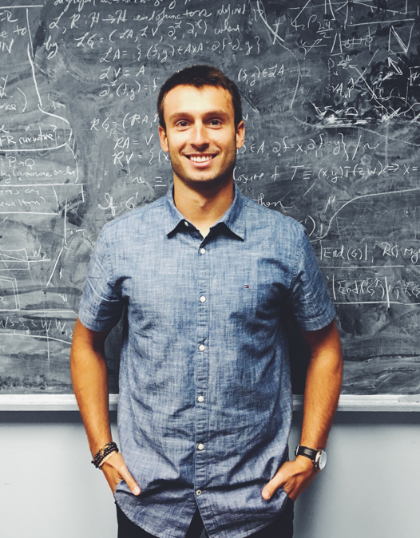Garrett Josemans '14 is a Longwood University alumnus with Bachelor's degrees in Physics and in Math, and he is currently pursuing a PhD in Physics with a concentration in Quantum Mechanics through George Mason University.
After graduating from Longwood University, he began his career at NSWCDD conducting missile guidance research and then eventually transitioned into conducting warfare analysis with a focus on electric weapon systems. One of his rotations was with Sly Fox Mission 19 where he led a team that designed and demonstrated a system to detect and disable low-cost quadcopters.
For the past year and a half, Garrett has been working under one of the Navy’s most published quantum physicists, where he performs theoretical and experimental quantum mechanics research in such areas as weak value amplification and the bunching of light quanta. Garrett hopes to contribute to the development of the Navy’s first quantum-based sensor.
He will present "An Introduction to Quantum Weak Values". Read his abstract below:
"In a 1988 paper by Aharonov, Albert, and Vaidman the notion of a weak value of a quantum mechanical observable was introduced. A weak value is the statistical result of a standard measurement procedure upon a pre-selected and post-selected ensemble of quantum systems when the interaction between the measuring apparatus and each system is sufficiently weak. This led to the controversial result that such a measurement procedure can yield values for the observable which lie well outside its eigenvalue spectrum, i.e. weak value amplification (WVA). Thirty years later the physics community is still trying to understand the deep quantum reality associated with weak values. Navy scientists are focused upon how WVA can be exploited to improve sensor technology. Recent WVA weak measurement experiments have produced amplifications of up to 10,000 times greater than what can be achieved using standard (strong) measurement methods. In this discussion we will introduce weak values first mathematically and then physically, moving into ways in which we can observe them in a laboratory setting and beyond."
Naval Surface Warfare Center, Dahlgren Division
The views expressed in this paper are those of the authors and do not reflect the official policy or position of the Department of the Navy, the Department of Defense, or the U.S. Government.
Discover more about the Mathematics and Computer Science Colloquium Series.

